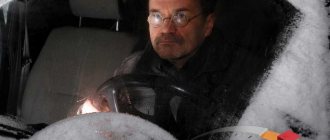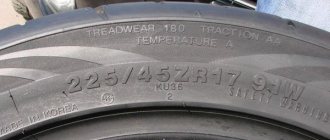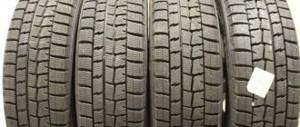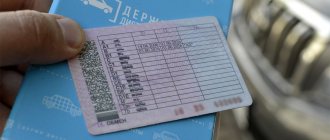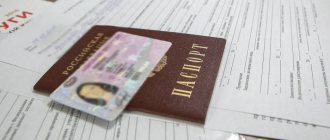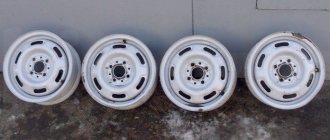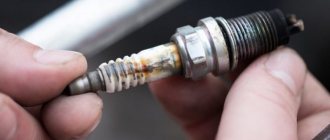How to choose the right tires for the summer
For summer, tires should be chosen from hard rubber, as opposed to winter, otherwise the degree of wear will be high. It is also worth paying attention to the tread pattern to ensure maximum traction.
When choosing summer tires, consider:
- standard size;
- tread pattern;
- tire design;
- load and speed index.
The standard size is the ratio of the height, width and outer diameter of the tire; if it is chosen incorrectly, the tires cannot be installed on the car. As a rule, acceptable sizes are indicated in the car's operating manual, and you should follow these recommendations. Because if you install tires with a larger diameter than recommended and acceptable, the dynamic characteristics will deteriorate and the wheels will begin to catch on the fenders.
Characteristics of modern tires for summer
Modern tires meet such qualities as to be suitable for use on a summer highway in dry or rainy weather, not to “melt” in the heat, to hold the road, and also to be oriented to different types of cars, which determines the standard sizes and other qualities.
Tread
The tread pattern can be symmetrically or asymmetrically directed, as well as asymmetrically. Symmetrically non-directional - a classic option, suitable for driving around the city and for country roads, more often found in the budget category, characterized by controllability, low wear, comfort and resistance to aquaplaning.
Directional symmetrical quickly removes water, improved resistance to driving and grip on wet roads, suitable for speed lovers, but cannot be switched from the rear to the front axle and vice versa, unlike the previous option. Asymmetrical - a universal option that combines the advantages of the previous two and good handling characteristics.
Therefore, when choosing summer tires, you should take into account the weather conditions of the region in which they will be used: if it rains often, attention should be paid to resistance to aquaplaning, that is, water drainage indicators. Whatever the orientation of the tires, they all have different tread groove depths, and the larger it is, the more confident the car is to drive on wet roads.
Compound
The composition of the rubber also plays a role: wear-resistant tires hold the road worse, while soft tires that have good grip wear out quickly. In this case, you need to start from your needs, what is more important to you: lower fuel consumption, greater mileage, or confidence in driving the car at high speed. Rubber with increased grip properties is suitable for lovers of an active driving style, and with low rolling resistance for those who want to reduce fuel consumption over long distances.
Run Flat
Also, modern tires are distinguished by the use of Run Flat technology, due to which the tires have a wide bead ring, a basic rubber composition with increased heat resistance, and the carcass itself with reinforcements. Due to this, even if the tire is deflated, the reinforced sidewalls hold it on the rim and bear the weight of the car after a puncture or loss of pressure, and the car's dynamic systems remain active.
Test from the ADAC Auto Club: 185/65 R15
Since it is already May 2020, we did not turn to outdated tests from ZR magazine, and turned to the results of tests conducted just 3 months ago, in which, along with famous and expensive ones, budget tires in size 185/65 R15 also participated .
The Germans, of course, could not help but exhibit their Continental, and took not the last, sixth, but the previous model.
Considering that in almost all Russian tests either she or Nokian came out the winner (she did not participate in this test), it would be logical to assume that here too this model will be ahead of the rest.
But no, here she not only didn’t win, but didn’t even make it into the top five. Meet the participants and see how the places are distributed among them.
Tire carrier - Volkswagen Polo
Since they competed in February, and the temperature required was suitable for summer weather, the test was carried out in Italy. VW Polo cars were chosen as tire carrier vehicles.
Participants and their achievements
A total of 16 sets of tires took part in the test, and there were no obvious outsiders who would be rated “unsatisfactory”. True, not everyone met the “good” criterion - or rather, only three participants.
See for yourself: we offer a rating of the 185 65 r15 summer tire with results, in which the models are arranged according to their positions:
1 – Bridgestone Turanza T005 (Japan)
Price from 3600 rub. This model invariably pleases with excellent results, taking leadership positions in almost all competitions. It received the best scores in disciplines on dry and wet asphalt, showed excellent efficiency, but was somewhat noisy.
In principle, this is normal, since achieving acoustic comfort, as a rule, reduces the driving performance of rubber.
2 – Vredestein Sportrac 5 (Holland)
From 4250 rub. This model received high final marks not only for excellent braking, but also for high wear resistance, acoustic characteristics, and very low fuel consumption. However, the tire is expensive, so it has not gained much popularity among Russians.
3 – Michelin CrossClimate+ (France)
4550 rub. The tire is economical and performs well on wet surfaces. But the final score was affected by insufficiently high scores for braking on dry asphalt and poor acoustics. Her price tag is the highest of all participants.
4 – Goodyear EfficientGrip Performance (USA)
From 5500 rub. This tire, on the contrary, had the best performance on dry roads, but it didn’t cope well with wet roads. Not very good resistance to lateral hydroplaning, and poor acoustic properties did not allow this model to receive a “good” rating. The experts' verdict is “satisfactory.”
5 – Firestone Roadhawk (Japan)
The model is new and in this size it is not yet available in our stores, so it is difficult to name the price. In Europe they ask for 268 euros for a set. Frankly speaking, it’s not cheap if you translate it into rubles.
The results that Firestone showed do not in any way match such a high price tag. This tire performed well only on dry roads; otherwise it did not shine at all and required high fuel consumption.
5 – Kumho Ecowing ES01 KH27 (Korea)
From 3500. Fifth place was awarded to four participants who showed approximately the same results. Kumho's good wear resistance and fuel efficiency allowed it to take 5th place. In terms of braking, the performance of this tire leaves much to be desired.
5 – Maxxis Mecotra ME3 (Taiwan)
About 2200-2900 rub. Sheena Maxis is one of the best among her compatriots. In this competition, it showed the lowest level of fuel consumption and worked perfectly on dry surfaces. The performance on wet asphalt was not the best, but overall this is a good brand of tires for the summer.
5 – Toyo Proxes CF2
From 2900. The Japanese Toya not only had the same price tag as the Chinese Maxis, but also all the competition results. Hence the identical expert assessments. If we evaluate the price-quality ratio, then the Proxes CF2 are good inexpensive tires for the summer.
9 – Continental ContiPremiumContact 5
3600 rub. And finally, we got to the German Continental, which was not quite conveniently placed on the ninth line. What did the experts not like about it?
Despite the fact that it handled handling and braking very well on dry and wet surfaces, its increased wear resistance did not allow it to take a place worthy of a premium tire.
9 – Falken Ziex ZE310 Ecorun (Japan)
This model is also not available in our online stores. By European standards, you need to pay 260 euros for the set.
There were three ninth places in the final table, and the Japanese Falken shared it with the German Continental and Semperit. Judging by the price, this model must be of premium quality.
She earned good marks for exercises on dry surfaces and low wear, but on wet asphalt she behaved extremely uncertainly. Hence the satisfactory rating.
9 – Semperit Comfort-Life 2 (Germany)
R15 - from 3520 rub. The second model from the Continental concern was in ninth place. It showed normal results only in tests for wear resistance and fuel efficiency. In exercises on directional stability and braking distance, to put it mildly, it did not shine.
12 – Giti GitiSynergy E1 (Singapore)
From 3100. The Giti Tire company has long been known in tire circles. Until now we were dealing with the GT Radial line of tires, but now it has been replaced by the new Giti model range.
These tires were certified in Germany, but this did not help them rise above 12th place in the test. The only advantages noted were fuel efficiency and good acoustics. These are the quietest r15 summer tires.
13 – Petlas Imperium PT515 (Türkiye)
About 3250 rub. The Devil's Dozen - place number 13 went to the Turkish Petlas. The tire was frankly weak in braking and speed exercises, it turned out to be noisy and not very resistant to hydroplaning.
The situation was saved only by good wear resistance and fuel efficiency.
14 – Hankook Kinergy Eco 2 K435
From 3200. If there was anything surprising in this competition, it was the performance of Hankuk, which ended up in 14th place. While he was good in almost all the major disciplines, the final score was affected by the tire's poor performance on wet pavement.
15 – Pirelli Cinturato P1 Verde (Italy)
From 3050. And the eminent Pirelli was completely surprised, receiving exactly the same comments as Hankuk. Thanks only to low fuel consumption and good wear resistance, such competitions are impossible to win.
16 – LingLong Green-Max HP010 (China)
RUB 2,150 As a rule, tires that are economical and acoustically comfortable have the poorest driving characteristics. This is exactly what the Chinese tire Ling Long demonstrated, becoming an outsider in this competition.
However, its rating was also satisfactory, which means that it can be driven quite comfortably, provided that the speed limit is low. In addition, these are the cheapest summer tires in this size.

